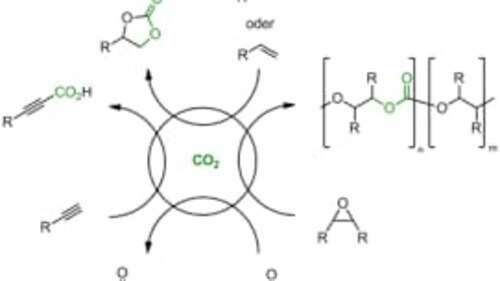CO₂ as a raw material: new process makes climate gas usable for the chemical industry
Rostock/Bochum/Marl, Germany. Researchers from the Leibniz Institute for Catalysis (LIKAT), Ruhr University Bochum and Evonik Oxeno have developed a novel catalyst system that enables the use of the climate gas carbon dioxide (CO2) as a raw material for the chemical industry. This breakthrough allows for the more sustainable production of key products such as fragrances and building blocks for plastics.
“Directly using CO2 as a feedstock is a milestone for sustainable chemistry on an industrial scale,” says Prof. Dr. Robert Franke, Project Leader at Evonik Oxeno. “Our collaboration with LIKAT and Ruhr University Bochum demonstrates how excellent fundamental research combined with industrial expertise can lead to innovative solutions for transforming the chemical industry.”
Carbonylation is a central process in chemical manufacturing, in which olefins - a group of hydrocarbons - are converted into esters or acids using carbon monoxide. These substances are essential components of many everyday products. The process yields both basic chemicals - such as methyl methacrylate, the precursor for acrylic glass - and specialty chemicals like the fragrance valeric acid methyl ester.
The newly developed bimetallic catalyst system replaces toxic carbon monoxide with climate-friendly carbon dioxide and green hydrogen. In the presence of the transition metals iridium and palladium, along with a proven industrial phosphine ligand, olefins are directly converted into esters. The system shows high selectivity for linear products, which are particularly valued in industrial applications.
“This catalyst system is a great example of how targeted research can contribute to the defossilization of the chemical industry. CO2 is no longer seen as waste, but as a valuable resource,” says Dr. Ralf Jackstell, Head of Research Group at LIKAT.
This opens up a new perspective: producing industrially relevant chemicals directly from climate gas CO2 and green hydrogen in a resource-efficient way. The results have been published in the renowned journal Journal of the American Chemical Society: https://pubs.acs.org/doi/10.1021/jacs.5c09325
Latest news
INEOS launches €250m investment supported by the French Government to secure the future of French industry at Lavera
The project marks the first phase of a long-term regeneration plan to reduce emissions, boost reliability, efficiency and competitiveness, with support of the French State.
Hycamite’s technology to decarbonize shipping awarded AiP by industry leader DNV
Kokkola Industrial Park →Hycamite’s proprietary Thermo-Catalytic Decomposition (TCD) technology offers a new approach to producing clean hydrogen by breaking down methane, the primary component of liquefied natural gas (LN...
Clariant catalysts will power the Ecoplanta: Europe's first waste-to-methanol plant
Chemmed Cluster Tarragona →Repsol is building Europe’s first plant to produce renewable methanol from urban waste The facility will use Enerkem gasification technology to produce 240 KTA of methanol Clariant will supply cata...
Lilly plans to build a new $3 billion facility to boost oral medicine manufacturing capacity in Europe for patients worldwide
Netherlands site will bring 500 manufacturing and 1,500 construction jobs while further strengthening Lilly's global supply chain

